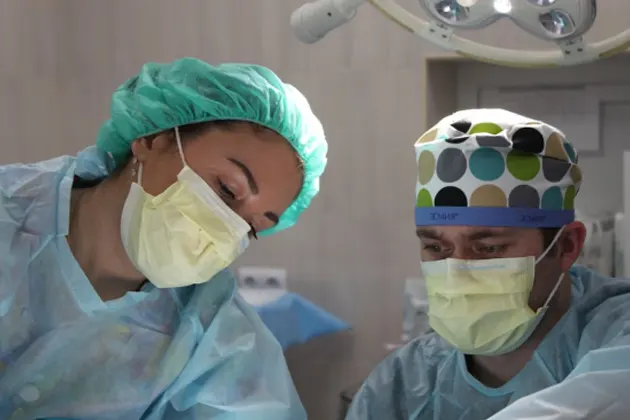Despite stunning advances in technology, minimally invasive procedures, and robot-assisted surgeries that seem straight out of a sci-fi film, one uncomfortable truth remains: medical errors are still a leading cause of preventable harm in modern hospitals.
It’s not for lack of skill or intent. Surgeons aren’t going rogue with scalpels, and anesthesiologists aren’t falling asleep at the gas switch. The reality is more complex and more systemic.
Medical errors often stem not from individual negligence but from the convergence of numerous factors: communication breakdowns, increasingly complex technology, outdated workflows, and yes, sometimes just plain human fallibility in a high-stress environment.
Let’s peel back the surgical drape and examine what’s really going on in modern operating rooms and what can be done about it.
The Tech Paradox: Advanced Tools, New Risks
We’ve all seen those sleek operating rooms with enough monitors to rival an air traffic control tower. Modern surgical environments are now deeply reliant on digital tools, from robotic arms that suture with micro-precision to real-time imaging systems that offer GPS-level mapping of the body.
And yet, tech, like any tool, is only as effective as the system around it. Sometimes the software freezes, sometimes the interface confuses staff, and sometimes the Wi-Fi drops.
Common tech-related challenges include:
- Poor Device Integration: New tools don’t always play nicely with legacy systems.
- Information Overload: Too many data streams can hinder decision-making rather than help it.
- Training Gaps: Surgeons may be handed cutting-edge tools without comprehensive support or hands-on training time.
Before you start wondering if your next surgery will be paused to restart the machine, know that these aren’t deal-breakers. But they underscore the need for planning, training, and backup strategies that are as sophisticated as the technology itself.
Workflow Breakdown: When Efficiency Becomes a Bottleneck
Every minute in the OR matters. Hospitals optimize schedules like fine-tuned engines to reduce idle time, balance staffing, and meet growing patient demands. But when workflows are too rigid or too fast-paced, cracks start to appear.
Maybe the pre-op checklist was rushed. Maybe the surgical team didn’t meet for a full briefing. Maybe a last-minute substitution in nursing staff left someone unsure about a new protocol.
This is where revision surgeries often come into the picture. Procedures that, while necessary, could sometimes be avoided with better systems in place from the start.
Cases like revision spine surgery highlight how not adapting a surgical plan over time or missing a communication cue can result in an initial surgery that simply doesn’t achieve the intended outcome.
What drives the need for surgical do-overs?:
- Inadequate imaging or diagnostics pre-surgery
- Failure to adjust to patient-specific anatomy or conditions
- Team misalignment on goals or technique mid-procedure
- Post-operative complications stemming from overlooked intraoperative events
The point isn’t finger-pointing – it’s process evaluation. Revision surgeries provide an important lens through which to study not just the “what” but the “why” behind earlier procedural missteps.
Communication: The Most Reliable Tool We Keep Dropping
If you thought communication challenges ended with unread Slack messages, welcome to the operating room, where miscommunication can actually cost lives.
Some communication pitfalls include:
- Assumptions based on past experience
- Inadequate team briefings and debriefings
- Over-reliance on informal or unverified hand-offs
- Staff feel too intimidated to speak up when something seems wrong
To fix this, hospitals have started taking a page from military and emergency response teams, implementing standardized checklists, encouraging “stop-the-line” safety moments, and flattening hierarchy where possible.
It’s not just about speaking up – it’s about inviting others to do so, too.
Adaptive Planning: Why Static Protocols Fall Short
Imagine trying to use a 2012 iPhone in 2025 and wondering why nothing works. Medical protocols can suffer from the same fate – reliable once, but increasingly out of touch as patient demographics shift, surgical innovations emerge, and staff rotations change.
Adaptive planning means allowing the system to grow and evolve with its environment. This doesn’t mean abandoning structure; it means building a smart structure that accounts for variability.
Some industries do this brilliantly. The nuclear power industry, for example, utilizes dynamic planning protocols that are continuously adjusted based on real-time performance feedback and environmental shifts. Medicine could take notes here – not just post-mortem after mistakes, but midstream.
Key traits of adaptive systems:
- Built-in feedback loops (e.g., real-time data from surgical dashboards)
- Scenario-based team training
- Regularly updated procedures and tools
- Input from all levels—not just senior leadership
So, What Can Be Done?
Medical errors are complex, but not inevitable. Many hospitals are already investing in smart tools, reshaping team culture, and learning from other industries that have tackled safety at scale.
Here’s what helps:
- Conducting root cause analyses after every adverse event—not just the major ones
- Fostering a culture where nurses, techs, and junior staff feel empowered to speak up
- Continuous training, especially with the rollout of new devices or software
- Supporting surgeons and OR teams with mental health resources to reduce fatigue-based errors
- Learning from revision procedures to build better protocols upstream
The bottom line? Perfection isn’t possible in a field this complex. But improvement absolutely is.
Final Thoughts: Don’t Blame the Scalpel
The next time you hear about a medical error, remember: it’s rarely a simple case of someone “messing up.” It’s often the tip of an iceberg made up of communication gaps, outdated systems, training shortfalls, and workflows that haven’t kept up with modern demands.
Solving these problems doesn’t require reinventing surgery. It requires revisiting the systems we’ve built around it.
From leveraging lessons in other industries to understanding the real reasons behind revision surgeries, we’re at a turning point in healthcare: one where smarter systems, safer communication, and adaptive planning can significantly reduce the risk of error and improve outcomes for everyone on the table.
Because if technology, teamwork, and thoughtful process design can land a rover on Mars, they can surely help us land a successful surgery – no do-over required.









